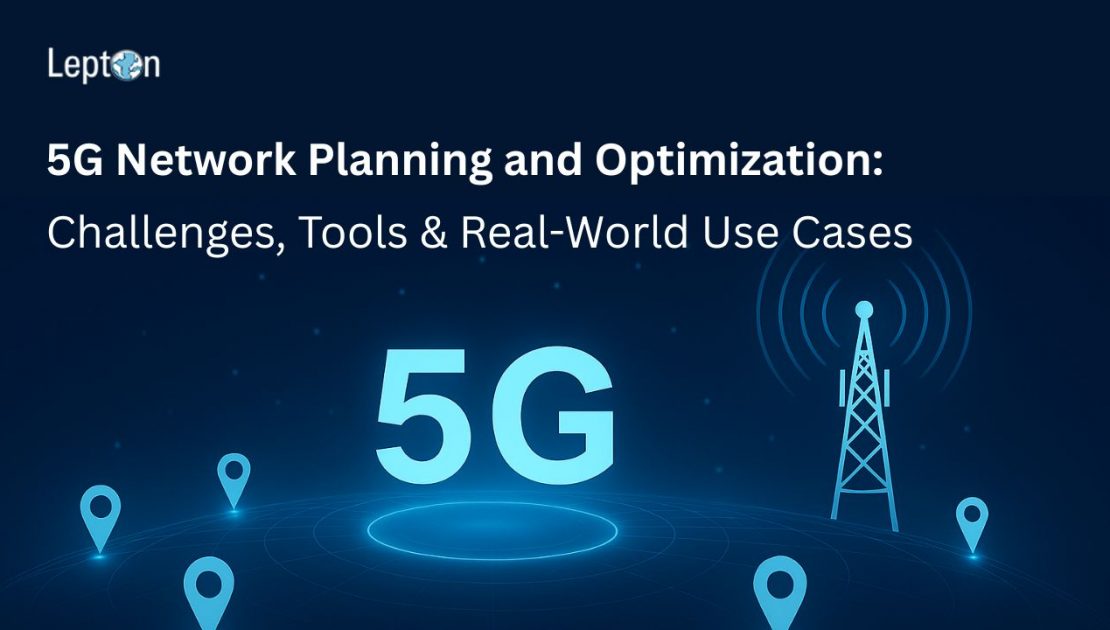The 5G network represents a transformational shift in wireless communication, offering unprecedented speed, ultra-low latency, and the ability to connect billions of devices in real-time. As 5G continues to roll out globally, the demand for robust 5G network planning has never been more critical.
Whether it’s for smart cities, autonomous transport, IoT ecosystems, or fixed wireless access, effective mobile network planning is foundational to delivering seamless user experiences and capitalizing on the full potential of 5G.
Also Read: Enhancing 5G Network Coverage with Digital Maps
Why 5G Is a Paradigm Shift
Unlike its predecessors, 5G is not just about faster speeds—it enables entirely new use cases:
- Blazing speeds up to 20 Gbps (100–250x faster than 4G)
- Latency as low as 1 millisecond—enabling real-time applications
- Massive device density, connecting up to 1 million devices per square kilometer
- Support for edge computing, smart grids, AR/VR, telemedicine, and more
However, this next-gen connectivity comes with significant technical and architectural challenges that make 5G network planning and optimization essential.
5G Network Planning Challenges: Why Traditional Models Fall Short
5G networks operate on higher frequency bands, especially millimeter waves (mmWave), which differ significantly from the lower-frequency sub-3 GHz bands used in 4G. These mmWaves:
- Don’t travel far (typically up to 300 meters)
- Cannot penetrate walls or heavy rain
- Are highly susceptible to interference from objects like trees, vehicles, or even humans
As a result, network planners must deploy dense small cell networks, with transmitters every few hundred meters—especially in urban environments.
Real-World Implication:
For a telecom operator, failing to plan for these limitations could mean spotty coverage, poor user experience, and increased customer churn.
Key Concepts in 5G RF and Radio Planning
To overcome these challenges, it’s essential to understand some core components of 5G radio planning and RF propagation modeling.
1. Millimeter Wave (mmWave) Communications
- Operates between 30–300 GHz
- Offers multi-gigabit speeds and low latency
- Enables massive bandwidth but requires precise deployment due to propagation limits
2. Propagation Modeling in mmWave
Environmental factors such as oxygen and water vapor absorption can significantly degrade mmWave signals:
- At 57–64 GHz, oxygen absorption peaks
- At 164–200 GHz, water vapor absorption is prominent
Impact of Environment on Signal Quality
Objects like buildings, vegetation, and even weather conditions like fog or snow can weaken or block mmWave signals, making advanced propagation modeling and scenario testing essential.
Tools for 5G Network Planning and Optimization
1. 3D Geodata and RF Planning
Lepton Software offers highly detailed 3D building models, terrain elevation datasets, and joint indoor-outdoor GIS integration to support:
- Accurate 5G coverage modeling
- Signal strength simulations at street and rooftop levels
- Identification of interference zones and fade points
These datasets, when integrated with industry-standard 5G network planning tools such as Mentum Planet or Atoll, offer deep insights for:
- Macro cell planning
- Small cell densification
- Frequency planning
- Backhaul optimization
2. Simulation and “What-If” Analysis
Network engineers can test:
- Varying weather conditions
- Signal obstructions from urban structures
- Indoor penetration modeling for malls, airports, and offices
This ensures that coverage, capacity, and QoS (Quality of Service) meet SLA expectations.
Fixed Wireless Capacity Planning: A Real-World 5G Use Case
Fixed Wireless Access (FWA) in 5G
FWA is emerging as one of the most commercially viable early use cases for 5G. It involves:
- Installing Customer Premises Equipment (CPE) at homes or businesses
- Connecting them wirelessly to a nearby macro or small cell
- Delivering high-speed internet without needing fiber to every doorstep
Why Planning Is Critical:
The placement of the CPE has a significant impact on performance. With advanced RF analysis and 3D geodata:
- Ideal CPE installation points can be pre-identified
- Indoor coverage predictions ensure quality service
- Manual drive tests are reduced, speeding up rollout and reducing cost
Lepton Software’s joint outdoor-indoor network models help optimize FWA planning, enabling telecom operators to quickly deploy and scale services.
The Road Ahead: Scaling 5G with Precision
The evolution to 5G requires more than hardware upgrades—it demands a data-driven planning ecosystem that integrates:
- High-resolution geodata
- Advanced RF and radio planning tools
- Indoor and outdoor signal modeling
- Optimization algorithms for fixed and mobile environments
As mobile operators look to deploy 5G across diverse geographies—urban, suburban, and rural—the ability to visualize, simulate, and optimize becomes the backbone of competitive differentiation.
Why Choose Lepton for 5G Network Planning?
With over 25 years of experience in geospatial and telecom intelligence, Lepton Software helps global CSPs:
- Reduce deployment time and cost
- Improve RF signal accuracy and performance
- Plan and simulate fixed wireless and mobile network rollouts at scale
Our tools and geodata are built to support every layer of 5G deployment—from planning to rollout to optimization.

